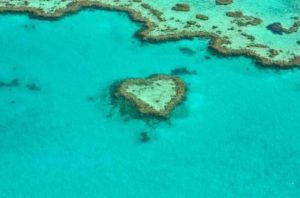
Researchers taking part in a project led by the World Wildlife Fund (WWF) have found pesticides, medications, and a variety of other industrial chemicals in blood samples of sea turtles in Great Barrier Reef.
In this study, researchers collected blood samples of turtles from different locations including Cleveland Bay in Townsville, Upstart Bay at the Burdekin River and the remote Howicks island group of Cape York. The researchers discovered indicators for thousands of chemicals present in turtles.
“What you put down your sink, spray on your farms, or release from industries ends up in the marine environment and in turtles in the Great Barrier Reef,” said environmental chemist Amy Heffernan from the University of Queensland, who is very surprised to know the findings of the study.
Dr Heffernan said a cocktail of chemicals present in the turtles’ blood is highly concerning.
“The worrying thing is there are more chemicals we could not identify than chemicals we could,” she said.
“Humans are putting a lot of chemicals into the environment and we don’t always know what they are and what effect they are having, we need to be conscious of that,” she said.
“There is one new chemical registered for use every six seconds, so the libraries and the databases that we use to identify these chemicals just can’t keep up.”
“WWF is also working with farmers and people from industry so that we can all responsibly manage the situation and the environmental impact,” she said.
Australia’s Great Barrier Reef is currently suffering damage from back-to-back years of “severe” coral bleaching. A 2016 survey of the reef had revealed bleaching to be most severe in the northern third of the Reef, but within one year, the middle third of the reef has been found to have experienced the most severe coral bleaching.
Bleaching due to high sea surface temperatures is a catastrophic event for coral reefs. Corals can die as abnormal heat makes them expel their symbiotic algae. Sea surface temperatures are now so high across much of the tropics that many reefs are suffering severe bleaching for consecutive fourth year. Many divers in Australia have already reported new bleaching in the northern part of the Great Barrier Reef.
In 2016, the sea surface temperatures on the Great Barrier Reef were the hottest on record in the months of February, March and April. As a result, the largest ever coral die-off on the Great Barrier Reef was recorded, with almost two-thirds of corals dying in the 700 kilometers north of Port Douglas in far north Queensland.
